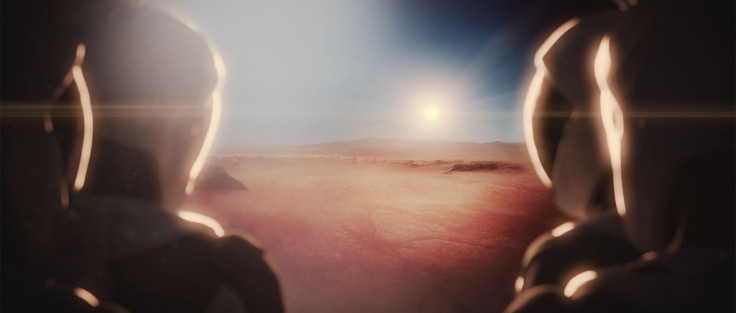Elon Musk Mars Plan: Human Civilization Project On Red Planet Detailed

Elon Musk has said it many times: The only reason he created SpaceX was to make the human race an interplanetary species. At the International Astronautical Congress last year, he gave a presentation that lasted more than an hour in which he detailed his plan to get humans to Mars.
"I really don't have any other motivation for personally accumulating assets except to be able to make the biggest contribution I can to making [humans], like, multiplanetary," he said on stage. Now he’s published that presentation as a commentary in the journal New Space. The commentary is almost a word-for-word transcript of his presentation.
Read: 8 Photos That Show What SpaceX And Elon Musk Think Traveling To Mars Will Look Like
The SpaceX and Tesla CEO and founder said Mars is the best planetary option when it comes to creating a multiplanet civilization. He said it’s ultimately better-suited for supporting a civilization in both his presentation and the commentary. The plan is to launch humans to Mars from the historic 39A launch pad at the Kennedy Space Center in Florida.

But a serious issue he identifies standing in the way of creating a civilization on Mars is cost. One way he’s already working on bringing the cost down is by making the parts of the journey reusable. His company already partially accomplished this with its reusable Falcon 9 rockets. The launches his company is currently conducting, through contracts like the one SpaceX has with NASA, are helping the company gain funding and perfect its rockets.
Since he founded SpaceX in 2002, the company has been able to develop plans to make the trip to Mars happen. The goal is to have a full civilization within 40 to 100 years of the first trip to Mars that is projected for as early as 2024, right after the first robotic mission.
The company will be sending two mystery passengers into space next year, the first time a SpaceX mission will take private citizens into space rather than trained astronauts.
Read: Elon Musk's SpaceX vs. NASA: Who Will Send Tourists To Space First?
The written version of his talk is accompanied by charts, photos, data and trajectories for the rocket launches that show how much thought the company has put into sending humans into space. In his talk, he notes a very detailed video showing the entire process of traveling to Mars was based on engineering computer-aided design models. Those CAD models are what SpaceX is using to create the rocket, boosters, spaceships and everything else needed to get humans to the Red Planet.
© Copyright IBTimes 2024. All rights reserved.











